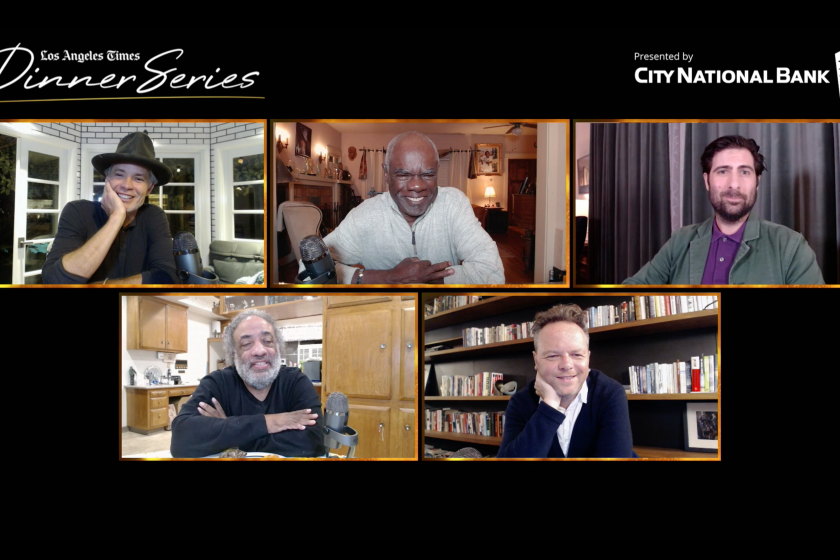How Chris Rock helped Noah Hawley shape the racism depicted in âFargoâ

âIt was one of the most stressful weeks of my life,â says âFargoâ showrunner Noah Hawley, summarizing his decision to shut down production on the fourth season of his Emmy-winning limited series in March 2020. âOn Monday I was directing re-shoots in Chicago, when we learned that someone on another crew had tested positive, so each day we had this escalating sense of fear,â says Hawley, speaking from his home office in Austin, with the desperation of those days now far behind him. âAt the same time, I was trying to negotiate with the corporations who were quite rightly worried about the cost of shutting down.â
By that Thursday, Hawley pulled the plug with eight episodes in the can and two more to go. âThere had been a desire to shoot for a few more days through the weekend, but as the boss responsible for the crewâs safety, I said no, itâs not worth putting peopleâs lives in jeopardy. At that point, nobody argued with me.â
During the unplanned hiatus, Hawleyâs team hammered out a 40-page document spelling out rules for how to shoot safely under pandemic conditions. Production on the 1950s period piece, starring Chris Rock and Jason Schwartzman as rival Kansas City gangsters, then resumed in late August without incident.
âWe were one of the test cases to come back early, and I was very proud of us for sort of pitching a perfect game,â Hawley says. âBut it was also a testament to how desperate everyone was to come back and finish what weâd started. Jason Schwartzman said he didnât shave his mustache the whole time, because he was terrified heâd lose that connection to the character. Iâm sure his wife was like, âNo, you can shave it and then grow it back and no one will know.â And Jason was like, âI would know.ââ
We sat down to a virtual dinner with creator Noah Hawley and the cast of âFargoâ to discuss Season 4 and Americaâs enduring affection for criminals and crooks.
In its final form â Hawley added an 11th episode to accommodate the thicket of story lines populated by 18 characters distributed across three families and one semi-corrupt law enforcement agency â Season 4 dramatizes a theme inspired by a line from the Coen brothersâ 1996 âFargoâ film. âThe phrase from that movie that always stuck with me is, âHere you are on a beautiful day, and for what? A little bit of money.â That idea led me to explore the death of the family business and the rise of corporate America in Season 2. Season 3 was about this postcorporate off-shore account billionaire. For Season 4, weâre looking at the original sin of capitalism, which is the exploitation of free and cheap labor. Itâs slavery, itâs immigration, itâs the last guy off the boat who will always do the work for cheaper.â
Season 4âs Black and Italian American antiheroes circumvent honest, underpaid labor by embracing the âalternate economy,â a.k.a. crime, as Rockâs Loy Cannon and his gang battle the local Mafia outfit led by Schwartzmanâs Josto Fadda. Hawley pictured Rock as the ambitious Loy â âChris Rock is a self-made man,â Hawley observes. âHe came from humble beginnings and created a global brand literally using just his wits. I just felt like, thatâs Loy Cannon! Chris brought an authenticity to the role. Heâs not acting like an entrepreneur. He is an entrepreneur.â
With Rock setting aside his stand-up comedy persona to play a tightly wound Loy, Irish actress Jessie Buckley wound up delivering the showâs most flamboyantly quirky performance as the mysteriously hobbled homicidal nurse Oraetta Mayflower.
âI thought it was funny that Oraetta is in a completely different movie than the rest of the show,â Hawley says. âHereâs this Mafia gangland crime story, and Oraettaâs in the angel-of-mercy story pretending that sheâs not a psychotic murderer. Sheâs pretending to be helping people, but sheâs not. Thereâs a particular kind of American madness that comes from pretending that youâre not who you are.â
Hawley fancied Buckley for the part after watching her movies âBeastâ and âWild Rose.â They first met on FaceTime. He says, âI could see that Jessie had a great sense of humor and was very Irish in a winning way. Oraetta has to carry a lot of comedic energy while still being really unsettling, so I thought: âOK, Jessie will be great.ââ
As with previous seasons, Emmy-winner Dana Gonzalezâs elegant cinematography heightens the storytelling with an attention to detail that has define the âFargoâ aesthetic since the showâs launch in 2014. âDetail is where comedy lives, and detail is also where character lives,â says Hawley, citing Anton Chigurhâs famously bad haircut in the Coensâ movie âNo Country for Old Menâ as an example. âIf he thinks that looks good, thereâs something wrong with this guy. You have to be open to the fact that comedy in moments like that isnât always funny. Sometimes itâs horror.â
In researching Season 4, Hawley absorbed reams of details about race and class during post-World War II America, but one of the most chilling pieces of information about mid-century racism came directly from the showâs star.
âChris Rock said I should look at the specific Jim Crow laws in Kansas City in 1950, because every place had a different law,â Hawley says. âChris told me his mom wasnât allowed to try on clothes, so she had a piece of string that was her waist size and a piece of string that was her shoe size. Thatâs how she tried on clothes. Details like that â you canât make up how terrible people are to each other.â
More to Read
From the Oscars to the Emmys.
Get the Envelope newsletter for exclusive awards season coverage, behind-the-scenes stories from the Envelope podcast and columnist Glenn Whippâs must-read analysis.
You may occasionally receive promotional content from the Los Angeles Times.











